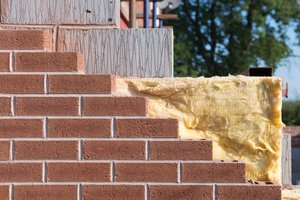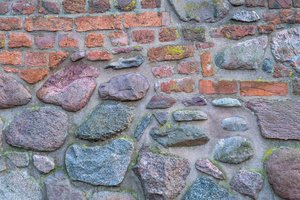For hundreds of years, humans have relied on stone for their buildings. Over time, architects and designers have established a variety of stone types that each have their own advantages and disadvantages for construction. Stone, brick, clay, cement and more are all viable options for commercial buildings. However, quality construction and longevity come not just from the type of material you choose but also how you choose to use it.
Commercial buildings will rely on numerous types of structures in order to stay sound and regulate the interior atmosphere. Here’s what you need to know about the five different types of masonry walls that commercial buildings might need, as well as how they’re made.
Post-Tensioned Masonry Wall

When people think of walls, they often envision bricks or stones stacked vertically on top of each other. The bricks above are supported and held up by the stones below them and mortar. However, in a post-tensioned wall, about half of the bars that are usually used inside the wall to hold it up are replaced with cables.
These cables are loose during construction. When the wall is completed, then they are pulled taut to provide support and structure. “Post-tensioned” means that the cables are given tension after the wall is built (as opposed to pre-tensioned, when the cables are pulled tight before construction begins). This type of structure can create more varied space shapes and is often used for bridges and large buildings, like parking garages. It stands up well to earthquakes and other damage.
Load-Bearing Masonry Wall
All buildings will require the use of at least some load-bearing walls. These structures are what hold up the weight of the building, and the bigger the building, the bigger these walls will need to be. Compared to aesthetic (non-load bearing) walls that are only used to create divisions between rooms, load-bearing masonry walls are permanent; if you knock them down, a section of the building may collapse because its support is gone.
Load-bearing masonry walls can be reinforced or not, depending on the building’s needs. Reinforced walls are stronger, but they are also more expensive.
Cavity Masonry Wall

Sometimes called hollow walls, cavity walls protect the climate of a building’s interior. Moisture and temperature can creep through bricks and stones from the outside, making it difficult to keep your building dry and at a comfortable temperature. By creating a hollow space between the exterior and interior of the building, it’s easier to keep moisture out and ideal temperatures in.
Reinforced Masonry Wall
Certain buildings that are particularly heavy, prone to damage or highly stressed can benefit from reinforced walls. These structures are similar to other walls made of stone or brick, except that in addition to these materials, steel rods are also placed within the walls. This helps to prevent cracking and creates a framework to reduce the weight being distributed onto the area.
Walls can be reinforced vertically or horizontally as needed. This process is more expensive due to the material cost of the steel rods, but it results in long-lasting structures that are resilient against stressors like natural disasters. Reinforced masonry walls can be load-bearing or not.
Composite Masonry Wall

Building with masonry can get expensive for larger buildings. In order to reduce costs while maintaining strength and stability, some commercial properties might opt for composite masonry walls. These structures are built with more than one type of masonry-for example, stones alongside bricks. This allows each element to be utilized where it is needed most without the need to use it for the entire structure.
One of the most common types of masonry walls is stone-facing. That is, the exterior is stone, but the inner structures are brick or concrete. Because stone is more expensive, it is ideal to use only as much as is minimally required for aesthetic purposes. Then, the rest of the wall out of sight can be made with concrete, which is strong, resilient and less expensive.
Composite walls can come in a number of mixtures with brick faces, stone faces and more.
Get Expert Help Choosing the Right Masonry for Your Commercial Needs
Commercial masonry buildings are heavy structures that require careful planning in order to ensure their safety and longevity. This includes planning not only which materials are used but how. If you have ideas you’d like to implement in your commercial building or if you need help constructing or repairing existing masonry, be sure to leave that task to the pros.
The experts at Waterproof Caulking & Restoration can help you understand your masonry options and how to keep your building secure, dry and in good repair for as long as possible. Reach out to learn more or to discuss your options and schedule an appointment.
